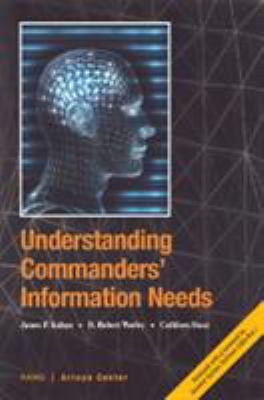
Book
|
Understanding commanders' information needs
Copies
2 Total copies, 2 Copies are in,
0 Copies are out.
Title
Understanding commanders' information needs
Call No
UB212
Digital Link
Authors
Subjects
Language
English
Published
Santa Monica, CA : Rand, 2000.
Publication Desc
xxvi, 98 p. : ill. ;
ISBN
0833028596
LCCN
00364710
Series
Dimensions
23 cm.









